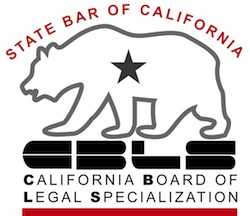Bankruptcy can strip down what you’re paying on your car loan to just the bare essentials, saving you bundles.
Consider my client whose car loan balance was grossly inflated to the point that she owed twice the value of her car, bought just a year ago.
Before bankruptcy “reform”, she could have stripped the loan balance down to what the car was actually worth. In essence, the old bankruptcy law gave the lender what it would have gotten by repossession.
But not today.
Bankruptcy “reform” of a decade ago prohibits stripping down the loan balance on cars bought in the past 2+years.
What Chapter 13 can do to car loans
Now that bankruptcy “reform” has shielded the car lender from the real world consequences of the car’s depreciation, the choices seem to be pay or surrender the car.
But not so fast.
Here in Silicon Valley we often retort: RTFM. In a bankruptcy case, it’s read the underlying contract.
When I did, I found thousands of dollars worth of financed “stuff” that even bankruptcy reform didn’t require the buyer to pay in full.
Ride along as we point out all the excess expense that Chapter 13 carves out of the car loan.
The underwater trade-in
It seems that my client had traded in her previous car when she still owed $9,000 on it. The trade-in value (at least in this deal) was $5,000.
So the loan for the new wheels included the $4,000 difference between the old loan and the trade-in credit. In bankruptcy circles, we call that “negative equity”.
The amount needed to pay off the old car, after credit for the trade-in allowance, was added to the price of the new car, in calculating the new car loan.
And thanks to a 9th Circuit decision called Penrod, the negative equity portion of the car loan wasn’t entitled to protection from strip-down.
So, we’ve wiped out $4000 of the loan balance, or at least booted it out of the “must pay” category of debts in her Chapter 13, to the “maybe they get something” category of general unsecured creditors.
Gap insurance inflates the balance
As I read on, I found $900 worth of “gap insurance”. This is extra insurance that covers the gap between the insured value of the car and the loan balance in the early years of the loan.
Even in car loans not larded with all the add ons and extras found in this deal, once you drive the car off the lot, it is worth less than the purchase price and therefore, usually worth less than the balance on the loan.
If you total the car at the first stop light after leaving the dealership, regular insurance pays what the car was worth just before the accident. Gap insurance will pay you the difference between the car’s insured value and the loan balance.
Without gap insurance, the car buyer gets a check for the car’s value and still owes the car lender.
But in Chapter 13, the car buyer is protected from that liability by bankruptcy law.
So, my client doesn’t need gap insurance, and we’ve reduced the must-pay portion of the loan by $900.
Service contract is extra
Last on the list of extras plumping the balance of the car loan was a $2000 service contract good for 75,000 miles.
My sense is that the terms of a service contract bought from the manufacturer of the car is carefully calculated to be profitable to the manufacturer.
After discussion, the client decided to reject the service contract and pay for repairs as needed.
We reduced the must-pay balance by another $2000.
Calculating the protected balance
When I added up the extras we carved out of the original loan balance, those extras were 30% of the loan amount.
So, we reduced the car lender’s secured claim that just recited the loan balance on its books by 30% and got the amount of the loan that was really the purchase-money portion of the deal. That will be paid in full through the Chapter 13 plan, regardless of what the collateral is now worth.
The car lender still gets a better deal in bankruptcy than it would if they repoed the car in the real world, but then, the car creditors had crafty lobbyists when bankruptcy “reform” was enacted.
Wait, there’s more
We aren’t done whittling this debt down to size, because Chapter 13 allows us reduce the interest rate paid on car loans to today’s market rate.
My client was paying a bit over 10% per year on the car loan. In Chapter 13, she’ll pay 4-5%.
The ability to change the interest rate on loans secured by personal property, as opposed to real property, was not changed by bankruptcy amendments of 2005.
And this is just one reason I love Chapter 13.
More
Options for your car in Chapter 7
Image courtesy of Daniel Olnes & Flickr.






